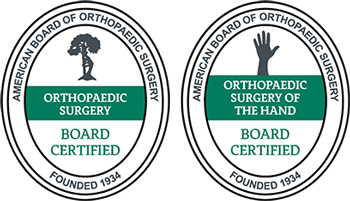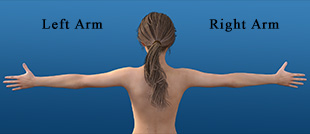How To Relieve Carpal Tunnel Pain
Carpal tunnel syndrome can be a real pain in the wrist. This is because a nerve to your hand passes through a narrow area called the carpal tunnel, where inflammation or injuries can cause pressure on the nerve which causes pain. But where does carpal tunnel pain hurt? It mainly affects the thumb and first three fingers of your hand, since your pinkie is served by another nerve. If you notice numbness and tingling, especially staring in the night or morning and worsens with certain movements, you might want to know how to relieve carpal tunnel pain in your wrist.
Contents
Wear a Wrist Brace

Image via Flickr by An Ta
A wrist brace goes around the thumb and over the bottom of the palm and the wrist, reducing movement in the area and giving your hand a chance to rest and heal. If overextension of the wrist is the reason for your carpal tunnel pain, then a wrist brace will help prevent this from continuing. A brace can also be useful at night to keep your wrist aligned while you sleep, which can be a time of painful flare-ups. A wrist brace is often helpful in preventing movement and relieving pain, readily available, and can’t hurt to try.
Use Ice or Warmth
As you know if you’ve played sports or had a sprained ankle, ice helps reduce inflammation. And since carpal tunnel pain is often caused by inflammation and swelling of the nerve, ice can be a good tool in your treatment of the condition. You can use an ice pack on your wrist, or put your hand and wrist into an ice bath. Warmth is another tool that can help manage pain. Try using gentle warmth like a hand bath at 100 degrees. Hand warmers or wearing fingerless gloves while you work can also help make you more comfortable.
Elevate Your Hand
If you’ve been wondering how to relieve carpal tunnel pain during pregnancy, one suggestion is to elevate your hand. Since pregnancy and other conditions that increase fluid retention can put pressure on the nerve in your wrist, elevating your hand will encourage fluid to move away from the area. This will help reduce pressure on the nerve through the carpal tunnel and alleviate some pain. Other conditions that increase fluid retention that can exacerbate the carpal tunnel include diabetes and thyroid disorders. If you have carpal tunnel syndrome related to pregnancy, it can improve after giving birth.
Topical Treatments
Application of topical products containing menthol can help relieve pain, including carpal tunnel pain. Popular products like Biofreeze or Tiger Balm can be applied to the affected area, reducing discomfort for you during the day and is easier to apply at work than an ice or warm water bath. Menthol on the skin gives a nice cooling sensation, which offers temporary pain relief. While it can be very helpful, it doesn’t treat the underlying condition, so you’ll still want to prevent overuse of your wrist or decrease excess fluids causing the pressure.
Medications and Steroidal Injections
Over-the-counter NSAIDs such as ibuprofen and aspirin can help ease pain and reduce inflammation to the area that is getting constricted, thereby decreasing discomfort. This can help you feel better while pursuing ways to resolve the issue causing the carpal tunnel symptoms in the first place. Your doctor might recommend steroidal injections of cortisone to help treat more severe carpal tunnel pain and injury. Steroids can reduce swelling and relieve the pressure on the nerve that causes pain and mobility issues. This is especially helpful if the pressure is caused by inflammation from conditions like rheumatoid arthritis.
Stretches and Exercises

Image via Flickr by daverose259
Some evidence shows that yoga can help add flexibility and decrease pain in carpal tunnel sufferers. If you are a regular at a yoga class, ask your instructor for some gentle yoga stretches that work on your upper body, arms, wrists, and hands. Over time, these can help your wrist get stronger and reduce symptoms. Other stretches that can be helpful are gently shaking your hands like you’re trying to get water off of them and making a fist, then stretching your fingers out and open. You can repeat these as needed throughout the day. Stretches and exercises can help prevent carpal tunnel from taking over your life.
Change Your Routine
If your carpal tunnel pain is from repetitive work, you’ll want to try doing things another way so as not to aggravate the situation. You might try using your uninjured hand for more tasks, take small breaks throughout the day to give your hand a rest, delegate irritating movement to others if you can, and rearrange your workspace if that can put your hand at a less painful angle. Doing tasks like typing with a light touch is a good idea to work on since this puts less pressure on your hand and won’t aggravate you as much.
Surgery
If conservative treatment fails, your doctor might recommend surgery for it. In this procedure, your surgeon cuts the ligament over the carpal tunnel to relieve the pressure. Don’t worry, the ligament will heal back with more room so you don’t suffer from inflammation and pressure in such a tight space, causing pain and damage to the nerve in your hand. With advances in endoscopic surgery, many people can receive this procedure through a small incision in the wrist, which heals faster and leaves less of a scar than the older open surgery.
Dealing with carpal tunnel pain can be challenging. It disrupts your work and ability to fully use your hand without pain. However, treating the injury as soon as possible will help you get back to a painless, healthy wrist and hand. Ignoring the pain and numbness for too long only leads to a more difficult treatment process and might result in permanent nerve damage. If you are suffering from carpal tunnel pain and need a doctor in the Dallas area, please don’t hesitate to reach out to our team at The Hand and Wrist Institute and contact us today.

























